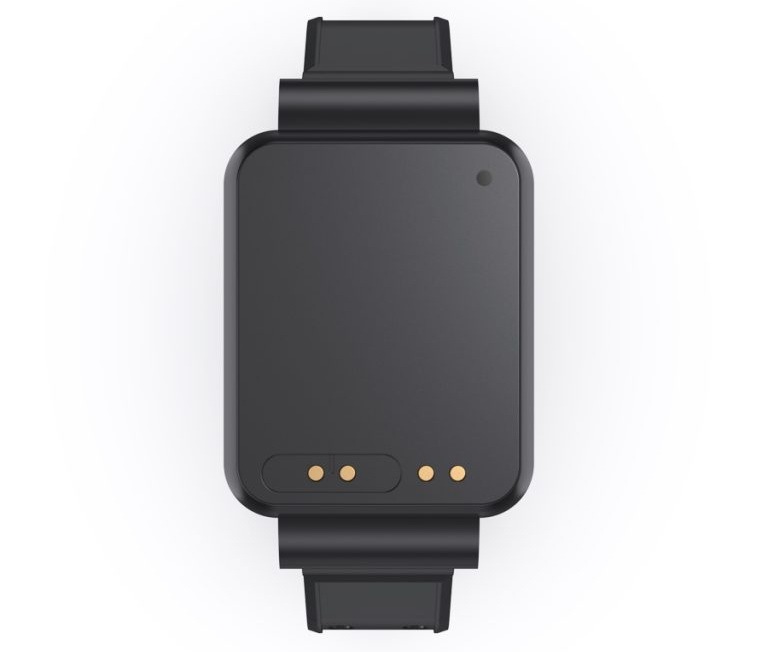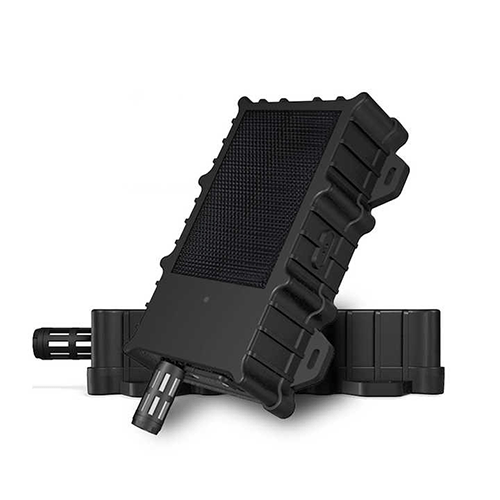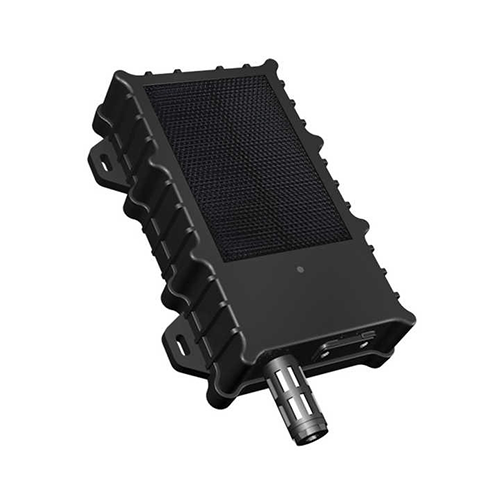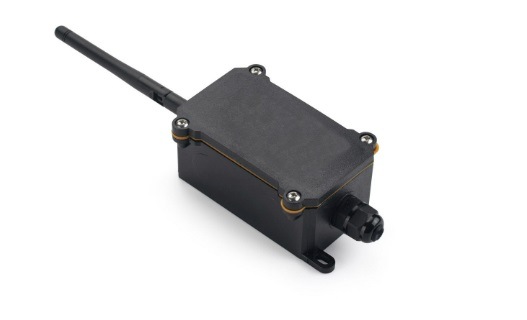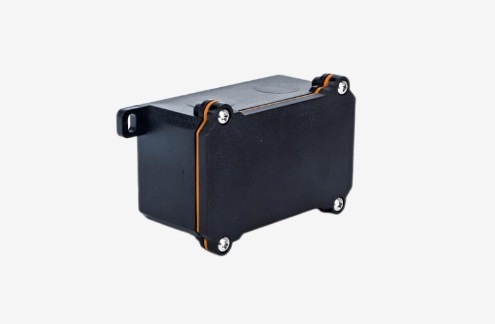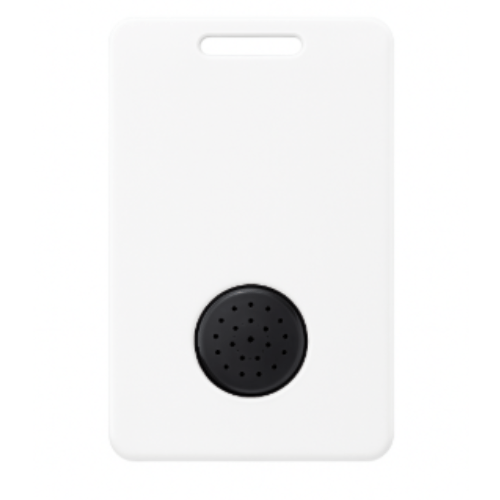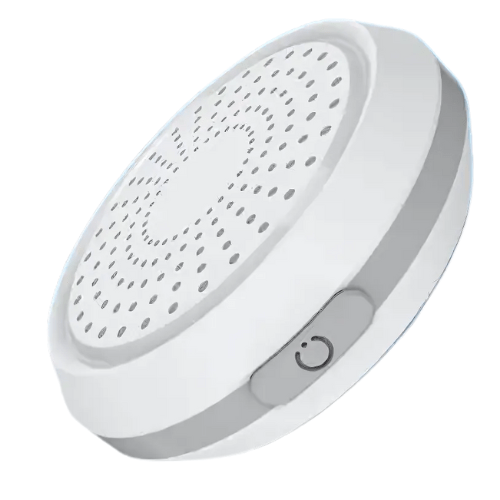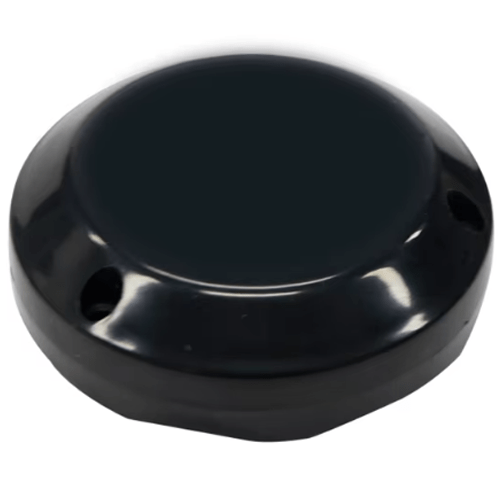OVERVIEW

The Hartford–West Hartford–East Hartford, CT MSA and its surrounding areas are a dynamic and diverse region with a rich industrial base and strong technological infrastructure. Home to a blend of industries ranging from healthcare and manufacturing to technology and logistics, this area is an economic hub in the northeastern United States. The region benefits from a highly educated workforce, robust research institutions, and a strategic location that connects major urban centers. Whether it’s advanced manufacturing, educational institutions, or cutting-edge medical facilities, the Hartford–West Hartford–East Hartford, CT MSA and its surrounding areas are key contributors to the regional economy.
At GAO RFID Inc., we are proud to be a part of this thriving region. With our expertise in RFID, UHF RFID, NFC, BLE, and BLE Mesh technologies, we serve a wide range of industries operating in this area. Our innovative solutions have been instrumental in improving efficiency, security, and operations across sectors like logistics, healthcare, and manufacturing. As one of the top 10 leading suppliers of RFID technology globally, we are committed to supporting the Hartford–West Hartford–East Hartford, CT MSA and its surrounding areas with state-of-the-art solutions tailored to meet the needs of our local and international customers.
Related Products & Systems
Below are products and systems related to this webpage:
- BLE Gateways
- BLE Beacons
- RFID Readers by Feature
- RFID Readers by Frequency
- RFID Tags by Feature
- RFID Tags by Frequency
- RFID Systems
- People Tracking System
- Access Control System
- Asset Tracking System
- Parking Control System
Our products are in stock can be shipped to anywhere in continental U.S. or Canada from our local warehouse. To purchase or for any further information, please fill out this form or email us.
We are actively looking for partners who are like us located in the U.S. and Canada. For more information on partnering with GAO, please visit Partner with GAO RFID Inc. It lists various ways to partner with GAO, such as OEM Partnerships, Technology Integration, Distribution and Reselling Opportunities, Presenting at the Leading Event TekSummit, Joint R&D Projects, Training and Consulting Services, Industry-Specific Collaborations, Research and Academic Partnerships.
Hartford–West Hartford–East Hartford, CT MSA and Its Surrounding Areas: A Comprehensive Overview
The Hartford–West Hartford–East Hartford, CT MSA and its surrounding areas, collectively referred to as the “Hartford metro area,” are key economic, cultural, and historical pillars in the state of Connecticut and the broader New England region. Known for their rich history, diverse communities, and significant industrial contributions, this metropolitan area represents a crossroads of innovation, education, and tradition.
Historical Background and Cultural Landscape
The Hartford–West Hartford–East Hartford, CT MSA traces its origins back to the 17th century, with Hartford being one of the oldest cities in the United States. The region has a deeply rooted colonial history, which can still be seen in its many historical sites and landmarks. The name “Hartford” itself comes from the town of Hertford in England, reflecting the early settlers’ ties to the Old World.
Over the centuries, the region has developed into a thriving urban area while maintaining its historical charm. Hartford, the largest city within the metro area, has long been the heart of Connecticut’s cultural and economic life. It was historically known as the “Insurance Capital of the World” due to the strong presence of major insurance companies headquartered here. East Hartford and West Hartford, neighboring cities, have grown into vibrant communities with their own unique cultural attributes and flourishing local economies.
Geography, Neighborhoods, and Suburbs
The Hartford–West Hartford–East Hartford, CT MSA is geographically centered on Hartford itself, with several surrounding municipalities and neighborhoods contributing to the area’s urban and suburban fabric. The downtown core of Hartford is recognized for its towering office buildings, government centers, and cultural institutions, such as the Wadsworth Atheneum Museum of Art and the Connecticut Science Center.
West Hartford, a neighboring suburb, is known for its excellent public schools, bustling commercial districts, and affluent residential areas. It is often regarded as a hub for arts and entertainment in the region, with vibrant cultural offerings and numerous parks and recreational spaces. East Hartford, another key city in the metro area, is home to important manufacturing sectors and offers expansive views of the Connecticut River.
Other notable neighborhoods and towns within the Hartford metro area include Bloomfield, Glastonbury, Newington, and Rocky Hill. These suburbs offer a blend of suburban tranquility with proximity to the city’s economic and cultural activities.
Economy, Industries, and Innovation
The Hartford–West Hartford–East Hartford, CT MSA has long been a major center for various industries. Known primarily for its insurance sector, the region is also a hub for finance, healthcare, manufacturing, technology, and education. The city’s history as a major player in the insurance industry dates back to the early 19th century, and while the sector has evolved, it remains a cornerstone of the Hartford economy.
In recent years, the area has become increasingly known for its innovation and tech-driven industries. The presence of institutions like the University of Hartford and the University of Connecticut, coupled with the region’s strong R&D ecosystem, has fostered growth in high-tech sectors, including biotechnology and advanced manufacturing.
GAO RFID Inc., headquartered in New York City and Toronto, Canada, has been proudly serving customers in Hartford–West Hartford–East Hartford, CT MSA for four decades. As one of the top 10 global suppliers of RFID, UHF RFID, NFC, BLE, and BLE Mesh technologies, GAO RFID has provided critical solutions to industries ranging from healthcare to logistics to manufacturing in the Hartford metro area. Along with its sister companies, GAO Research Inc. and GAO Tek Inc., we have built a strong presence in this region, supporting both Fortune 500 companies and leading research institutions with state-of-the-art products and services.
Education and Research Institutions
The Hartford–West Hartford–East Hartford, CT MSA is also recognized for its commitment to education and research. With prestigious universities such as the University of Hartford, Trinity College, and the University of Connecticut (UConn) nearby, the region benefits from a strong pipeline of skilled labor, innovative research, and academic collaboration. UConn, located just outside Hartford, is a major research institution that has contributed significantly to the region’s technological advancements, particularly in fields like engineering and biomedical sciences.
These academic institutions, combined with public and private partnerships, make the Hartford metro area an attractive location for R&D-driven businesses, including those in industries such as healthcare, aerospace, and IT.
Transportation and Connectivity
The Hartford–West Hartford–East Hartford, CT MSA is strategically located in New England, offering excellent transportation options that connect it to the broader region and beyond. With access to major highways like Interstates 91 and 84, the area offers easy access to Boston, New York City, and other Northeast hubs.
Additionally, Bradley International Airport, located just north of Hartford in Windsor Locks, provides air travel options for both domestic and international destinations. The region also benefits from a robust public transit system, with bus services operated by CTtransit and commuter rail services linking Hartford to New Haven and New York.
Climate and Environment
The climate of Hartford–West Hartford–East Hartford, CT MSA is characterized by four distinct seasons. Winters are cold and snowy, with average temperatures ranging from the mid-20s to the low 30s, while summers are warm and humid, with temperatures often reaching into the 80s and 90s. The region experiences significant rainfall year-round and sees beautiful foliage during the fall months, attracting tourists and nature enthusiasts.
The metro area is home to numerous parks, nature reserves, and the Connecticut River, providing ample opportunities for outdoor activities such as hiking, boating, and fishing.
Significance in the State and Region
Hartford, as the state capital, plays a vital role in Connecticut’s political, cultural, and economic life. The Hartford–West Hartford–East Hartford, CT MSA also serves as a critical regional hub for business, technology, and healthcare. Its strategic location between Boston and New York City enhances its significance as a connector for industries in the Northeast.
GAO RFID Inc. is proud to contribute to the technological advancements in the Hartford metro area. Over the last 40 years, we have been committed to providing top-tier RFID and BLE solutions that have enhanced the operational efficiency and security of industries such as logistics, healthcare, and education in this region.
Landmarks and Culture
The Hartford metro area is home to a number of significant cultural landmarks. The Wadsworth Atheneum, one of the oldest public art museums in the United States, is a highlight of the region’s arts scene. Other notable sites include the Mark Twain House & Museum, where the famous author lived and wrote many of his works, and the Bushnell Center for the Performing Arts, which hosts a wide range of performances, from Broadway shows to symphony concerts.
The Hartford metro area is also home to a diverse population, contributing to a vibrant cultural landscape. From festivals celebrating the region’s rich immigrant history to modern art exhibitions and music events, there is always something to experience.
GAO RFID’s Technologies, Products, and Systems
GAO RFID Inc., headquartered in New York City and Toronto, Canada, is recognized as one of the top 10 global suppliers of RFID and BLE technologies. Over the past four decades, we have served numerous industries across Hartford–West Hartford–East Hartford, CT MSA, offering a range of innovative products and systems designed to enhance operational efficiency, security, and asset management.
BLE and BLE Mesh
Bluetooth Low Energy (BLE) is a wireless communication technology that enables the exchange of data between devices with low power consumption. BLE is commonly used in applications like asset tracking, personnel tracking, and proximity-based services.
BLE Mesh extends the BLE protocol, creating a network of interconnected devices. This allows for large-scale deployments, such as smart buildings or extensive tracking systems, and is widely used in industrial and retail environments.
RFID (Radio Frequency Identification)
RFID is a technology that uses radio waves to automatically identify and track tags attached to objects. It’s used in applications like inventory management, asset tracking, and supply chain monitoring. RFID can operate at various frequencies, with different types suited for different applications.
UHF RFID (Ultra High Frequency RFID)
UHF RFID is a type of RFID that operates in the ultra-high-frequency band, enabling long-range communication and high-speed data transfer. UHF RFID is widely used in logistics, vehicle tracking, and supply chain management, offering efficiency and accuracy in asset and personnel tracking.
NFC (Near Field Communication)
NFC is a short-range wireless communication technology primarily used for contactless payment systems, access control, and data sharing between devices in close proximity. NFC is commonly used in mobile phones, public transportation, and secure entry systems.
HF RFID (High Frequency RFID)
HF RFID operates in the high-frequency range, offering secure and reliable data transfer over short distances. It’s commonly used in applications such as library book tracking, public transport ticketing, and smart card access.
LF RFID (Low Frequency RFID)
LF RFID operates at a lower frequency, offering benefits like better penetration through materials and resistance to interference. LF RFID is often used for animal tracking, industrial automation, and access control systems.
Personnel Tracking
Personnel tracking solutions utilize RFID, BLE, or other technologies to monitor and manage the location and movement of individuals within a defined space. These systems enhance security and operational efficiency, widely used in healthcare, manufacturing, and corporate environments.
Asset Tracking
Asset tracking systems use RFID and other wireless technologies to monitor the location, condition, and status of valuable assets in real time. These solutions help companies minimize losses, improve inventory management, and ensure equipment is available when needed.
Parking Systems
Parking systems equipped with RFID or BLE technology provide automated solutions for vehicle identification, entry/exit control, and payment processing. These systems improve the efficiency of parking operations in urban centers and business districts, enhancing customer experience and optimizing space utilization.
Access Control
Access control systems using RFID, NFC, or BLE technologies manage entry to secure areas by identifying authorized individuals or vehicles. These systems are commonly used in commercial buildings, universities, hospitals, and industrial facilities to maintain security while allowing convenient access for authorized users.
Major Industries in Hartford–West Hartford–East Hartford, CT MSA and Its Surrounding Areas
- Insurance and Financial Services
- Healthcare and Biotechnology
- Advanced Manufacturing
- Aerospace and Defense
- Education and Research
- Technology and IT Services
- Retail and E-commerce
- Transportation and Logistics
- Real Estate and Construction
- Hospitality and Tourism
Insurance and Financial Services in Hartford–West Hartford–East Hartford, CT MSA and Its Surrounding Areas
The insurance and financial services industry is a cornerstone of the economy in Hartford–West Hartford–East Hartford, CT MSA and its surrounding areas. The region has long been recognized as a hub for this industry, with its roots tracing back to the early 19th century when it became known as the “Insurance Capital of the World.” The area’s central location in the Northeastern U.S. and its extensive regulatory frameworks make it an attractive home for major insurance companies, asset management firms, and other financial services providers.
Divisions of the Insurance and Financial Services Industry
The insurance and financial services industry in Hartford–West Hartford–East Hartford, CT MSA is diverse, comprising several key divisions:
- Insurance Companies: This is the dominant sector, encompassing life, health, property, casualty, and reinsurance providers. The region is home to several globally recognized insurance companies, with Hartford being the headquarters of many prominent firms.
- Asset Management and Investment Firms: These companies focus on managing wealth, investments, and retirement funds for both individuals and institutions. Hartford–West Hartford–East Hartford, CT MSA has a strong concentration of these firms, which are supported by a robust infrastructure of banks and credit unions.
- Financial Technology (FinTech): The growth of digital platforms and innovations such as blockchain has brought a new wave of financial technology companies to the region. FinTech is revolutionizing everything from payment systems to insurance underwriting, and the region has seen significant investment in these technologies.
- Risk Management and Consulting: This sector provides advisory services to insurance companies, financial institutions, and businesses seeking to mitigate financial risk. The demand for sophisticated risk management solutions continues to grow as businesses face new challenges related to cybersecurity, market volatility, and regulatory compliance.
- Regulatory and Compliance Bodies: Hartford–West Hartford–East Hartford, CT MSA hosts various state and federal agencies that regulate the insurance and financial industries, such as the Connecticut Insurance Department. These bodies ensure the industry’s compliance with laws and regulations, contributing to its stability and growth.
Significance to Hartford–West Hartford–East Hartford, CT MSA
The insurance and financial services sector is vital to the region’s economy, accounting for a significant portion of employment, economic output, and tax revenues. The region’s dense concentration of insurance firms supports thousands of high-skilled jobs, contributing to its reputation as a financial services hub. The financial services industry also plays a crucial role in supporting other regional industries, including healthcare, real estate, and manufacturing, by providing capital, risk management, and strategic financial advice.
Major Players
Several major players in the global insurance and financial services sector call Hartford–West Hartford–East Hartford, CT MSA their home. These include some of the largest life insurers, health insurance providers, and asset management firms, such as:
- Aetna
- The Hartford
- Travelers Insurance
- Prudential
- Cigna
- Hartford Investment Management Company (HIMCO)
These companies not only provide a wide array of financial products but also contribute to the region’s ongoing economic growth, innovation, and infrastructure development.
GAO Case Studies
- A financial institution implemented an asset tracking system utilizing UHF RFID technology to improve the tracking and management of its physical assets, resulting in reduced operational costs and enhanced security across multiple locations.
- A major insurance firm adopted BLE Mesh technology for real-time personnel tracking within its corporate headquarters, enabling better management of its workforce and enhancing employee safety during emergencies.
- A regional bank integrated access control systems using NFC and UHF RFID technology to secure its sensitive data centers and branches, ensuring only authorized personnel could access critical areas.
- A large insurance provider implemented a parking system control using BLE technology to optimize its parking spaces for employees and customers, improving overall operational efficiency at its headquarters.
- A government contractor in the financial services sector utilized asset tracking and personnel tracking solutions by GAO RFID to maintain real-time monitoring of its equipment and staff across multiple high-security facilities, boosting compliance with industry regulations.
Healthcare and Biotechnology Industry in Hartford–West Hartford–East Hartford, CT MSA and Its Surrounding Areas
The healthcare and biotechnology industry is a critical component of the economy in Hartford–West Hartford–East Hartford, CT MSA and its surrounding areas. The region is renowned for its advanced medical research institutions, cutting-edge healthcare services, and a growing biotechnology sector that supports both local and global needs. This industry encompasses healthcare providers, pharmaceutical firms, biotechnology research, medical device manufacturing, and health technology innovation.
Divisions of the Healthcare and Biotechnology Industry
- Healthcare Providers and Hospitals: Hartford–West Hartford–East Hartford, CT MSA is home to some of the most respected healthcare institutions in the country. The healthcare system includes large hospital networks, private clinics, specialty healthcare centers, and mental health facilities. These organizations provide critical services ranging from emergency care to long-term rehabilitation. Leading medical centers in the region include Hartford Hospital, Saint Francis Hospital, and Connecticut Children’s Medical Center.
- Biotechnology Firms: The biotechnology sector in the region thrives with a concentration of firms dedicated to genetic research, diagnostics, and therapeutic developments. These companies often partner with universities and healthcare systems to advance innovations in drug development, immunotherapy, and personalized medicine. Yale University, with its prominent School of Medicine, is an important research hub for biotech innovation.
- Pharmaceutical Manufacturing: Pharmaceutical companies operating in the region focus on research and development (R&D) to produce life-saving medications and vaccines. Hartford–West Hartford–East Hartford, CT MSA plays an essential role in both the production and the regulatory oversight of pharmaceutical products, with a number of companies specializing in both generic and branded drugs.
- Medical Devices and Equipment: The region’s medical device industry is robust, contributing significantly to healthcare delivery. This division includes companies involved in the design, manufacture, and commercialization of medical devices used in diagnostics, surgical procedures, and monitoring. The sector also works closely with healthcare providers to integrate advanced technologies into patient care.
- Healthcare IT and Health Technology Solutions: With the rise of digital health, healthcare IT companies are increasingly critical to improving patient outcomes, reducing costs, and streamlining operations. The implementation of solutions like electronic health records (EHR), remote patient monitoring (RPM), and telemedicine has been a game changer in patient care. GAO RFID plays a role in the healthcare industry by offering asset tracking and people tracking technologies that help hospitals and healthcare institutions track medical equipment, personnel, and patients in real time, ensuring efficiency and improving operational management.
- Health Research and Academia: The region is also home to renowned academic institutions such as the University of Connecticut Health Center and Yale University, both of which engage in significant medical and biotechnology research. These institutions partner with local healthcare providers to foster innovation in treatments, technology, and healthcare delivery models.
Significance to Hartford–West Hartford–East Hartford, CT MSA
The healthcare and biotechnology sector is a major driver of economic growth in Hartford–West Hartford–East Hartford, CT MSA. It provides thousands of high-paying jobs in both clinical and non-clinical roles, from researchers to healthcare workers, and contributes to local economic development through innovation and investment in new technologies. The presence of high-caliber research institutions and healthcare providers strengthens the region’s position as a leader in healthcare excellence and biotechnology advancements.
Additionally, the biotechnology sector plays a crucial role in the local economy by fostering collaboration between healthcare providers, academic institutions, and technology firms. The region has also become a national leader in medical research, particularly in areas such as cancer research, neuroscience, and immunology. This collaborative environment has enabled Hartford–West Hartford–East Hartford, CT MSA to attract significant investments from both private and government sectors, ensuring continued growth in the biotechnology field.
Major Players in the Healthcare and Biotechnology Industry
- Hartford Healthcare: A prominent healthcare network that includes Hartford Hospital, the state’s largest hospital, and numerous other facilities offering specialized medical services, research, and education.
- Aetna: Headquartered in Hartford, Aetna is a major health insurance provider offering services in areas such as life, dental, and disability insurance. Aetna has a significant presence in the region and plays a key role in healthcare delivery.
- Pfizer: A global pharmaceutical leader with a strong presence in the region, particularly in the area of biopharmaceutical research and vaccine development.
- Medtronic: Known for its medical devices and therapies, Medtronic operates in the area, advancing treatments for chronic conditions, surgical technologies, and medical devices.
- Connecticut Children’s Medical Center: One of the leading pediatric hospitals in the region, providing specialized healthcare services, research, and education.
GAO Case Studies
- A healthcare provider integrated asset tracking solutions using UHF RFID technology across its multiple hospitals to streamline equipment management, ensuring that critical medical devices are always available for patient care.
- A medical research facility adopted people tracking technology to monitor researchers and ensure that lab areas are always accessible only to authorized personnel, improving both security and operational efficiency.
- A regional healthcare provider implemented access control systems powered by NFC and RFID technologies to secure sensitive medical records and pharmaceutical storage areas, reducing the risk of unauthorized access.
- A biotechnology company in the region utilized asset tracking and people tracking technologies by GAO RFID to improve inventory management and ensure the safety of laboratory staff, leading to increased research productivity.
- A healthcare institution used parking system control with BLE technology to optimize parking for staff and visitors, enhancing the overall experience for patients and improving parking lot efficiency.
Advanced Manufacturing Industry in Hartford–West Hartford–East Hartford, CT MSA and Its Surrounding Areas
The advanced manufacturing industry in Hartford–West Hartford–East Hartford, CT MSA and its surrounding areas is a cornerstone of the regional economy, driving innovation, employment, and economic development. This sector encompasses a wide range of industries, from aerospace and defense manufacturing to precision machining, additive manufacturing, and advanced materials production. The region is known for its rich history in manufacturing, particularly in aerospace and industrial equipment, and continues to be a hub for cutting-edge manufacturing technologies.
Divisions of the Advanced Manufacturing Industry
- Aerospace and Defense Manufacturing: The aerospace and defense sector remains a key player in the region’s manufacturing landscape. Companies in this division produce high-precision components for commercial and military aircraft, satellite systems, and defense technology. The Hartford–West Hartford–East Hartford, CT MSA is home to several well-established aerospace manufacturers, including Pratt & Whitney, which is one of the largest producers of jet engines globally. This industry is driven by demand for innovation in materials, efficiency, and performance, leading to continuous research and development.
- Precision Manufacturing: The precision manufacturing sector in the region focuses on producing high-quality components for industries such as medical devices, robotics, and automotive. This involves cutting-edge technologies like 3D printing, laser cutting, and CNC machining, which are utilized to create products with tight tolerances and complex geometries. The use of RFID and BLE technology for asset tracking and management has become increasingly important, enabling manufacturers to track inventory, tools, and personnel within manufacturing facilities.
- Additive Manufacturing (3D Printing): Additive manufacturing is rapidly gaining traction in Hartford–West Hartford–East Hartford, CT MSA, with numerous firms embracing 3D printing to create prototypes and low-volume production parts. The ability to create complex, customized products without the need for traditional molds has disrupted the manufacturing landscape. Companies are also integrating IoT solutions to monitor and improve the efficiency of 3D printing operations.
- Industrial Automation and Robotics: As the manufacturing sector evolves, the use of automation and robotics is growing in Hartford–West Hartford–East Hartford, CT MSA. Industrial automation streamlines production lines, enhances precision, and reduces human error, while robotics plays a critical role in tasks such as assembly, inspection, and packaging. Automation systems are increasingly integrating RFID, NFC, and BLE technologies for asset tracking, employee safety monitoring, and system optimization.
- Smart Manufacturing and Industry 4.0: The region has seen the rise of Industry 4.0, which incorporates IoT technologies, data analytics, and artificial intelligence to create “smart” manufacturing environments. Smart manufacturing focuses on optimizing production processes, reducing waste, and increasing efficiency through real-time data and predictive analytics. Asset tracking, people tracking, and access control solutions are commonly implemented using RFID, NFC, and BLE technologies, providing manufacturers with detailed insights into their operations and enabling predictive maintenance.
- Advanced Materials and Nanotechnology: This division focuses on the development and production of new materials with enhanced properties, such as stronger, lighter metals, polymers, and nanomaterials. Companies in the region are advancing the use of nanotechnology to create products that can withstand extreme conditions, are more energy-efficient, or provide other specialized properties. GAO RFID’s asset tracking and people tracking solutions can help businesses in this division manage materials and ensure that employees working with hazardous or sensitive materials are properly monitored.
Significance to Hartford–West Hartford–East Hartford, CT MSA
The advanced manufacturing sector is a key contributor to Hartford–West Hartford–East Hartford, CT MSA’s economic prosperity. This industry provides thousands of high-skilled jobs, including engineering, research, design, and production roles. Advanced manufacturing firms are also major contributors to local supply chains, supporting both large multinational corporations and smaller specialized suppliers.
The sector’s ability to innovate, through technologies such as smart manufacturing, automation, and additive manufacturing, makes the region a competitive player in the global market. The collaboration between manufacturers, research institutions, and technology providers in the area ensures that Hartford–West Hartford–East Hartford, CT MSA continues to evolve and remain at the forefront of manufacturing innovation.
Major Players in the Advanced Manufacturing Industry
- Pratt & Whitney: One of the world’s leading manufacturers of aircraft engines, Pratt & Whitney plays a central role in Hartford–West Hartford–East Hartford, CT MSA’s aerospace and defense sector, continually innovating to provide state-of-the-art jet engines for both commercial and military applications.
- Raytheon Technologies: A major player in the aerospace and defense industries, Raytheon Technologies has a significant presence in the region, specializing in advanced electronics, radar systems, and defense technologies.
- Kaman Corporation: Kaman is a prominent manufacturer of aerospace components, industrial equipment, and composite materials. The company focuses on providing solutions for commercial and military aerospace, as well as industrial sectors.
- UTC Aerospace Systems (now part of Raytheon Technologies): This company manufactures critical components for aircraft and aerospace systems, with a focus on safety, precision, and performance.
- Electric Boat: Specializing in the design and construction of nuclear-powered submarines, Electric Boat is a leading defense contractor in the region, offering advanced manufacturing capabilities for military applications.
GAO Case Studies
- A manufacturing facility implemented asset tracking solutions to improve inventory management, reducing the time spent searching for tools and equipment and ensuring that resources were always available when needed.
- A large aerospace company used people tracking technology to monitor the location and activities of workers in a high-risk production area, enhancing safety and improving operational efficiency.
- A robotics manufacturer adopted RFID and BLE solutions for access control, ensuring that only authorized personnel could access critical areas of the factory, thus improving security.
- A precision manufacturing company utilized smart manufacturing tools integrated with IoT solutions, optimizing its production lines and reducing downtime by predicting equipment failures before they occurred.
- A global manufacturer of industrial equipment implemented parking system control using BLE technology to streamline employee and visitor parking at its headquarters, improving efficiency and user experience.
Aerospace and Defense Industry in Hartford–West Hartford–East Hartford, CT MSA and Its Surrounding Areas
The Aerospace and Defense industry in Hartford–West Hartford–East Hartford, CT MSA and its surrounding areas is one of the most robust and historically significant sectors in the region. The industry thrives on cutting-edge technology and precision engineering to meet the global demand for high-performance aerospace components and defense systems. The sector plays a pivotal role in the local economy, supporting thousands of jobs in manufacturing, research and development (R&D), and system integration.
Divisions of the Aerospace and Defense Industry
- Aerospace Manufacturing: Aerospace manufacturing in Hartford–West Hartford–East Hartford, CT MSA is a major contributor to the region’s economic health, with a focus on the production of commercial, military, and space-grade components. The production of aircraft engines, structural components, avionics, and propulsion systems are key to the area’s aerospace manufacturing landscape. Companies like Pratt & Whitney, a major employer in the region, design and manufacture jet engines and advanced propulsion systems for both military and commercial applications. The integration of RFID solutions in these manufacturing plants helps streamline inventory management, improve parts traceability, and ensure that all components are tracked throughout their lifecycle.
- Defense Systems and Equipment: The defense sector in the Hartford–West Hartford–East Hartford, CT MSA is critical to national security, with companies focused on developing and producing advanced defense technologies such as radar systems, missile defense systems, and military vehicles. These products are often subject to strict quality controls and undergo rigorous testing before deployment. The use of RFID for asset tracking and access control is commonplace in defense facilities to manage sensitive equipment and personnel. RFID-based access control systems ensure that only authorized individuals can enter high-security areas, while people tracking technology enhances workforce safety in dangerous work environments.
- Space Exploration and Technology: The space technology division in Hartford–West Hartford–East Hartford, CT MSA is a growing sector, with companies focused on producing components for satellite systems, rockets, and other space exploration technologies. Research institutions and defense contractors in the area collaborate to advance space technology capabilities. UHF RFID and NFC technologies can be integrated into space missions to monitor and track critical components, both on Earth and in orbit, providing real-time data for mission-critical operations.
- Aerospace Research and Development: The region is home to several research institutions and innovation hubs that foster advancements in aerospace and defense technologies. These institutions work closely with private companies to develop next-generation technologies such as unmanned aerial systems (UAS), autonomous flight systems, and advanced materials for high-performance applications. The use of IoT solutions, including BLE Mesh networks, enables the collection of data from various components in real-time, allowing for continuous monitoring and improvements in system efficiency.
Significance to Hartford–West Hartford–East Hartford, CT MSA
The Aerospace and Defense industry is a cornerstone of Hartford–West Hartford–East Hartford, CT MSA’s economy, providing high-skilled jobs, fostering innovation, and supporting a network of suppliers and subcontractors. The sector contributes significantly to the region’s GDP and plays a vital role in maintaining the United States’ technological and defense superiority.
The aerospace and defense industry’s adoption of smart manufacturing techniques and Industry 4.0 technologies has further reinforced the region’s position as a leader in advanced manufacturing. The integration of RFID, IoT, and asset tracking technologies allows for enhanced operational efficiency, supply chain visibility, and predictive maintenance of critical systems. Furthermore, the high level of R&D investment in these technologies helps keep the region at the forefront of global aerospace and defense advancements.
Major Players in the Aerospace and Defense Industry
- Pratt & Whitney: As one of the largest manufacturers of jet engines in the world, Pratt & Whitney is a dominant force in the aerospace sector in Hartford–West Hartford–East Hartford, CT MSA. Their advanced propulsion systems for commercial and military aircraft drive innovation in the global aerospace market.
- Raytheon Technologies: A major player in both the aerospace and defense sectors, Raytheon Technologies develops technologies related to defense, avionics, cybersecurity, and space systems. Their systems help secure national defense and contribute to aerospace advancements.
- Kaman Corporation: Specializing in aerospace and defense systems, Kaman designs and manufactures precision components used in helicopters, aerospace systems, and industrial machinery. Kaman’s products often require integration with asset tracking solutions to ensure quality control during manufacturing.
- General Electric Aviation: A key player in the aviation sector, GE Aviation designs and manufactures jet engines and other aerospace systems. Their innovations in propulsion technologies continue to influence the future of commercial and military aviation.
- Electric Boat: A division of General Dynamics, Electric Boat is responsible for the design and construction of nuclear-powered submarines. The company is a critical player in the U.S. Navy’s defense strategy, requiring high-tech manufacturing processes and stringent quality assurance procedures.
GAO Case Studies
- A major aerospace manufacturer integrated asset tracking technology to improve inventory management of high-precision components, reducing search times and ensuring proper maintenance of parts.
- A defense contractor used RFID-based access control to enhance security and restrict access to sensitive areas, ensuring that only authorized personnel could enter critical zones.
- A space technology firm utilized IoT and people tracking solutions to monitor and manage employee movements and safety in high-risk areas during the assembly of satellite components.
- A military aerospace manufacturer implemented predictive maintenance using UHF RFID and IoT technologies to monitor the health of its equipment and reduce unscheduled downtime.
- An aerospace research institute adopted BLE Mesh technology to track and collect data from multiple components during field tests, optimizing the performance of new aerospace systems.
Education and Research Industry in Hartford–West Hartford–East Hartford, CT MSA and Its Surrounding Areas
The Education and Research industry in Hartford–West Hartford–East Hartford, CT MSA and its surrounding areas is a vital driver of innovation, workforce development, and economic growth. This sector encompasses prestigious universities, cutting-edge research institutions, and advanced educational facilities that equip students and professionals with the skills and knowledge required to thrive in a technology-driven world. The integration of advanced technologies, including IoT and RFID systems, has enhanced the efficiency, security, and effectiveness of educational and research operations throughout the region.
Divisions of the Education and Research Industry
- Higher Education Institutions: The Hartford–West Hartford–East Hartford, CT MSA region boasts a network of renowned universities and colleges offering a wide range of programs. These institutions are pivotal in preparing a skilled workforce for the local and global markets. To improve campus management, RFID-based access control systems are deployed to secure restricted areas such as laboratories and administrative offices, while BLE Mesh networks ensure seamless connectivity across sprawling campuses. In libraries, UHF RFID systems streamline book tracking and inventory management, significantly reducing operational burdens.
- Research and Development Centers: Leading R&D centers in the region focus on fields such as aerospace, healthcare, energy, and advanced manufacturing. These centers leverage cutting-edge technologies to develop innovative solutions with global impact. For instance, asset tracking powered by BLE and NFC technologies ensures the efficient utilization and maintenance of valuable research equipment, while IoT-based remote sensing systems collect and analyze environmental data in real time. GAO RFID’s technologies, known for their precision and reliability, are integral in enhancing the operational efficiency of these high-tech facilities.
- K-12 Education and STEM Programs: K-12 schools in the Hartford–West Hartford–East Hartford, CT MSA region emphasize STEM (Science, Technology, Engineering, and Mathematics) education to prepare students for technology-focused careers. IoT solutions, such as smart classroom management systems, optimize energy consumption and improve learning environments. Meanwhile, RFID and BLE tracking systems enhance student safety by enabling real-time monitoring during field trips and campus activities.
- Medical and Healthcare Research: The region’s healthcare research institutions are at the forefront of medical innovation, conducting critical studies in areas such as genetics, pharmaceuticals, and IoMT (Internet of Medical Things). RFID and BLE systems facilitate the tracking of sensitive biological samples and medical equipment, ensuring compliance with stringent regulatory standards. Access control systems provide an added layer of security in laboratories handling confidential patient data and hazardous materials.
- Corporate Training and Continuing Education: The Hartford–West Hartford–East Hartford, CT MSA is a hub for corporate training programs, often tailored to the needs of industries like aerospace, manufacturing, and finance. These programs integrate advanced learning tools, including IoT-enabled smart classrooms, to deliver engaging and interactive training experiences. Parking system control solutions ensure efficient management of parking spaces during large-scale training events, enhancing the overall experience for participants.
Significance to Hartford–West Hartford–East Hartford, CT MSA
The Education and Research industry is a cornerstone of the Hartford–West Hartford–East Hartford, CT MSA region, fueling innovation, creating high-paying jobs, and fostering partnerships between academia and industry. It serves as a magnet for talent, attracting students, researchers, and professionals from around the globe. By integrating technologies such as RFID, IoT, and BLE Mesh, this sector has positioned itself as a leader in smart, efficient, and secure operations. The adoption of predictive maintenance IoT solutions in research facilities, for example, minimizes downtime and enhances the productivity of critical equipment.
Major Players in the Education and Research Industry
- The University of Hartford: A comprehensive institution known for its strong programs in engineering, business, and the arts, the University of Hartford collaborates with industry leaders to address real-world challenges. The university uses RFID-based asset tracking systems to manage lab equipment and optimize resource utilization.
- Trinity College: Renowned for its liberal arts programs, Trinity College integrates technology into its campus operations, employing BLE tracking and smart building management systems to enhance energy efficiency and security.
- Hartford HealthCare Research Facilities: These institutions conduct groundbreaking medical research, supported by advanced technologies such as NFC-based equipment tracking and IoT-enabled remote patient monitoring systems.
- Rensselaer at Hartford: A satellite campus of Rensselaer Polytechnic Institute, this center focuses on graduate education and corporate training, leveraging IoT-based smart offices to create dynamic learning environments.
- Capitol Region Education Council (CREC): This council supports public education initiatives, often integrating technologies like RFID student tracking systems to improve safety and administrative efficiency.
GAO Case Studies
- A university implemented RFID asset tracking to manage its extensive inventory of laboratory equipment, reducing losses and improving accountability.
- A research institution adopted IoT-based environmental monitoring to collect real-time data during field experiments, enhancing the accuracy of its studies.
- A K-12 school district employed BLE student tracking systems to improve student safety during off-campus activities, ensuring real-time updates for parents and administrators.
- A healthcare research facility used access control systems integrated with NFC technology to secure its laboratories and protect sensitive data and materials.
- A corporate training center installed parking system control solutions to manage large-scale events efficiently, improving traffic flow and participant satisfaction.
Technology and IT Services Industry in Hartford–West Hartford–East Hartford, CT MSA and Its Surrounding Areas
The Technology and IT Services industry in Hartford–West Hartford–East Hartford, CT MSA and its surrounding areas is a cornerstone of regional innovation and economic vitality. This sector encompasses software development, telecommunications, cybersecurity, IoT solutions, and IT infrastructure management, driving digital transformation across multiple industries such as healthcare, insurance, manufacturing, and government services. Advanced technologies like BLE, RFID, and IoT are deeply integrated into the fabric of this industry, facilitating smarter, more efficient operations and opening new possibilities for connectivity and automation.
Divisions of the Technology and IT Services Industry
- Software Development and IT Infrastructure: Hartford–West Hartford–East Hartford, CT MSA is home to numerous IT firms specializing in custom software solutions and IT infrastructure services. These companies deploy BLE Mesh networks to enhance connectivity in office environments, supporting seamless integration of IoT devices for tasks like environmental monitoring and asset tracking. UHF RFID systems are increasingly used for inventory management, enabling real-time tracking of IT assets and ensuring data security.
- Telecommunications and Networking: The region’s telecommunications providers are leaders in delivering advanced connectivity solutions. These companies utilize RFID and NFC technology to improve the security and efficiency of data centers and communication hubs. Additionally, IoT-enabled fleet management systems are used to optimize the deployment of service vehicles across Hartford–West Hartford–East Hartford, CT MSA, enhancing response times and operational efficiency.
- Cybersecurity and Data Analytics: The growing reliance on cloud computing and IoT devices has amplified the importance of robust cybersecurity measures. GAO RFID’s access control systems are employed to secure sensitive data centers, ensuring only authorized personnel can access critical infrastructure. Simultaneously, IoT-based predictive maintenance systems are used to monitor and prevent hardware failures, protecting both physical and digital assets.
- IoT and Smart City Solutions: Hartford–West Hartford–East Hartford, CT MSA is actively transforming into a smart region with IoT-driven innovations. Smart grid technologies enhance energy management, while RFID and BLE solutions enable asset tracking and monitoring across industries such as logistics and healthcare. GAO RFID supports these initiatives with scalable and customizable IoT platforms that integrate seamlessly with existing infrastructure.
- IT Services for Financial and Insurance Sectors: Hartford’s historical role as an insurance hub has driven demand for IT services tailored to the financial sector. Companies utilize NFC-based authentication systems to enhance transaction security and IoT solutions for real-time analytics in risk management. GAO RFID’s technologies help streamline these operations by offering advanced access control and monitoring systems, ensuring both compliance and operational excellence.
Significance to Hartford–West Hartford–East Hartford, CT MSA
The Technology and IT Services industry is a significant driver of economic growth and job creation in Hartford–West Hartford–East Hartford, CT MSA. It underpins key regional industries, providing the digital infrastructure and innovative tools necessary for competitiveness in a global economy. The adoption of GAO RFID’s smart parking systems, asset tracking solutions, and predictive maintenance IoT platforms exemplifies how technology enhances efficiency and sustainability across sectors.
Major Players in the Technology and IT Services Industry
- IT Service Providers: Local and regional IT firms specialize in solutions such as cloud computing, managed IT services, and custom software development. These companies integrate GAO RFID’s IoT platforms and BLE Mesh systems to offer clients robust and scalable solutions.
- Telecom Giants: Telecommunications providers in the region drive connectivity with cutting-edge fiber and wireless solutions, often relying on NFC technology for secure network management and IoT-enabled asset monitoring.
- Insurance Tech Innovators: The insurance sector heavily invests in technology to optimize operations and enhance customer experiences. RFID and BLE solutions by GAO RFID support critical applications such as secure data storage, document tracking, and automated access control.
- Government and Public Sector: Public institutions and smart city projects across Hartford–West Hartford–East Hartford, CT MSA rely on technologies like smart building management systems and environmental IoT monitoring. GAO RFID’s solutions help ensure these projects meet performance and sustainability goals.
- Healthcare IT Specialists: The region’s healthcare facilities use advanced IT systems for patient monitoring, data security, and logistics. IoMT (Internet of Medical Things) applications powered by GAO RFID improve care delivery and operational efficiency, from hospital asset tracking to remote patient monitoring.
GAO Case Studies
- A large IT service provider implemented BLE Mesh networks and RFID-based asset tracking across its offices to enhance resource management and improve network reliability.
- A telecommunications company integrated NFC-enabled access control systems into its data centers, ensuring compliance with industry security standards and reducing unauthorized access incidents.
- A regional logistics firm deployed IoT-based fleet management systems and predictive maintenance platforms to optimize vehicle utilization and reduce operational costs.
- A government agency adopted smart building management IoT systems combined with environmental monitoring to improve energy efficiency and compliance in its facilities.
- A healthcare institution used UHF RFID and BLE tracking systems to monitor medical equipment and maintain real-time visibility of critical assets during emergency responses.
Retail and E-Commerce Industry in Hartford–West Hartford–East Hartford, CT MSA and Its Surrounding Areas
The retail and e-commerce industry in Hartford–West Hartford–East Hartford, CT MSA and its surrounding areas is a dynamic sector driving significant economic activity. It integrates physical retail outlets, online marketplaces, logistics, and technology, blending traditional shopping experiences with cutting-edge digital solutions. The region benefits from its strategic location, well-developed infrastructure, and adoption of advanced technologies like RFID, BLE, and IoT to streamline operations and enhance customer experiences.
Divisions of the Retail and E-Commerce Industry
- Brick-and-Mortar Retail: Traditional retail remains a vital component of Hartford–West Hartford–East Hartford, CT MSA’s economy, comprising department stores, specialty shops, and local businesses. These retailers increasingly leverage RFID systems for inventory management, reducing losses and ensuring stock accuracy. BLE beacons are used to enhance customer experiences by delivering personalized offers directly to shoppers’ smartphones in-store, showcasing how GAO RFID’s technologies bridge the gap between physical and digital retail.
- E-Commerce and Online Marketplaces: The e-commerce sector has seen exponential growth, with platforms requiring robust logistics and fulfillment systems. GAO’s UHF RFID asset tracking solutions help manage high-volume inventory in warehouses, ensuring timely order fulfillment. Simultaneously, IoT-based predictive maintenance systems improve the efficiency of conveyor belts and robotics used in automated distribution centers.
- Omnichannel Retailing: Retailers in Hartford–West Hartford–East Hartford, CT MSA adopt omnichannel strategies to merge online and offline shopping experiences. BLE Mesh networks facilitate seamless in-store connectivity, enabling real-time inventory visibility across multiple channels. GAO RFID supports these initiatives with NFC-enabled mobile payment systems, ensuring secure transactions and enhanced customer convenience.
- Logistics and Supply Chain: The backbone of the retail industry is its supply chain, encompassing transportation, storage, and last-mile delivery. GAO RFID’s fleet management IoT solutions ensure optimal routing and tracking of delivery vehicles, improving efficiency and customer satisfaction. Smart warehouse technologies, including RFID-based location tracking, ensure that goods are stored and retrieved with precision.
- Customer Analytics and Engagement: Retailers leverage data-driven insights to optimize their offerings and enhance customer engagement. RFID and IoT systems collect and analyze data on customer behavior, helping retailers tailor their services. For example, GAO RFID’s BLE-based people tracking technologies help monitor foot traffic in stores, providing actionable insights to improve layout and product placement.
Significance to Hartford–West Hartford–East Hartford, CT MSA
The retail and e-commerce industry significantly impacts the region’s economic landscape, creating jobs and contributing to innovation. Retailers and logistics providers in Hartford–West Hartford–East Hartford, CT MSA benefit from proximity to major highways and a robust workforce. GAO RFID’s technologies, including smart parking control systems for shopping centers and IoT-enabled energy management for retail buildings, support operational efficiency while enhancing the customer experience.
Major Players in the Industry
- National Retail Chains: Prominent retailers rely on RFID-based inventory systems to improve stock accuracy and reduce shrinkage. GAO RFID’s products ensure these systems deliver maximum reliability and efficiency.
- E-Commerce Platforms: Leading e-commerce players use IoT-driven logistics solutions and BLE-based tracking systems to manage extensive distribution networks and monitor goods in transit.
- Local Retailers: Independent businesses in Hartford–West Hartford–East Hartford, CT MSA adopt technologies such as NFC-enabled payment systems and RFID inventory solutions to stay competitive and meet modern customer expectations.
- Logistics Firms: Logistics providers use asset tracking technologies like RFID and BLE to ensure timely delivery and maintain supply chain integrity. GAO RFID’s predictive maintenance systems minimize downtime in their fleets and warehouses.
- Mall and Shopping Center Operators: Operators employ smart building IoT systems to manage energy usage, optimize parking with GAO RFID’s parking control systems, and improve foot traffic flow with BLE-based tracking technologies.
GAO Case Studies
- A retail chain implemented UHF RFID inventory tracking systems across multiple locations, reducing stock discrepancies and improving replenishment efficiency.
- An e-commerce distribution center integrated IoT-enabled asset tracking with predictive maintenance systems, enhancing operational efficiency and minimizing equipment downtime.
- A shopping mall operator adopted BLE beacon technology and smart parking systems, streamlining visitor experiences while optimizing energy usage.
- A logistics company utilized fleet management IoT platforms alongside RFID-based supply chain monitoring to ensure accurate and timely deliveries across Hartford–West Hartford–East Hartford, CT MSA.
- A local retailer deployed NFC-enabled payment systems integrated with BLE Mesh networks, improving checkout speed and delivering personalized offers to customers.
Transportation and Logistics Industry in Hartford–West Hartford–East Hartford, CT MSA and Its Surrounding Areas
The transportation and logistics industry in Hartford–West Hartford–East Hartford, CT MSA and its surrounding areas is a cornerstone of regional economic vitality. This sector supports diverse industries by ensuring the seamless movement of goods and people. Advanced technologies, including RFID, BLE, and IoT systems, are transforming operations to meet the demands of efficiency, sustainability, and adaptability.
Divisions of the Transportation and Logistics Industry
- Freight and Supply Chain Management: The freight sector handles the movement of goods across local, national, and international routes. GAO RFID’s UHF RFID tags and readers are integral in tracking shipments in real time, reducing delays, and minimizing losses. Additionally, IoT-enabled asset monitoring systems ensure transparency in supply chain operations, offering insights into the location, condition, and movement of cargo.
- Warehousing and Distribution: Warehousing facilities in Hartford–West Hartford–East Hartford, CT MSA leverage cutting-edge technologies to optimize operations. BLE-based asset tracking solutions from GAO RFID enable precise location tracking of inventory within warehouses, while NFC-enabled systems streamline check-in and check-out processes for goods. These innovations improve inventory accuracy and boost productivity.
- Public Transportation and Mobility Services: The region’s public transit systems benefit from technologies like BLE Mesh networks, which enhance connectivity and enable real-time tracking of buses and trains. GAO RFID also supports smart ticketing solutions using RFID and NFC, improving commuter convenience and operational efficiency.
- Fleet and Vehicle Management: Fleet operators utilize fleet management IoT systems to monitor vehicle health, optimize routes, and reduce fuel consumption. GAO RFID’s predictive maintenance technologies, integrated with BLE and RFID systems, help ensure that transportation vehicles operate at peak performance while minimizing downtime.
- Airport and Marine Logistics: Airports and ports in Hartford–West Hartford–East Hartford, CT MSA implement RFID and IoT solutions for cargo tracking, passenger management, and operational safety. GAO RFID’s smart access control systems provide secure entry to restricted areas, ensuring compliance with safety regulations.
- Last-Mile Delivery: The last-mile delivery segment addresses the final leg of the supply chain, crucial for e-commerce and local distribution. BLE-enabled tracking devices and IoT-powered logistics systems from GAO RFID enhance delivery efficiency by providing real-time data on package locations and optimizing delivery routes.
Significance to Hartford–West Hartford–East Hartford, CT MSA
The transportation and logistics industry underpins the economic framework of Hartford–West Hartford–East Hartford, CT MSA. Its strategic location along major transportation corridors facilitates the movement of goods and people, supporting local businesses and fostering regional growth. GAO RFID’s energy management IoT systems and smart building technologies help logistics hubs reduce operational costs and meet sustainability goals.
Major Players in the Industry
- Logistics and Freight Companies: These companies depend on RFID-based tracking solutions to ensure the safe and timely delivery of goods. GAO RFID provides robust technologies to enhance operational visibility and reduce inefficiencies.
- Public and Private Transit Operators: Transit authorities leverage GAO RFID’s BLE-based tracking systems for real-time monitoring of public transportation vehicles, improving schedule adherence and commuter satisfaction.
- E-Commerce and Retail Fulfillment Centers: Distribution centers utilize GAO RFID’s warehouse automation technologies, such as RFID-integrated conveyor systems, to manage high inventory volumes efficiently.
- Aviation and Marine Operators: Airports and seaports adopt GAO RFID’s access control and cargo tracking systems to maintain security and optimize logistics operations.
- Local Delivery Services: Small and medium-sized delivery firms implement GAO RFID’s IoT-enabled fleet management solutions to streamline last-mile deliveries and enhance customer satisfaction.
GAO Case Studies
- A freight company optimized its supply chain by integrating UHF RFID tags and IoT-enabled monitoring devices, achieving real-time cargo visibility and reducing delays.
- A warehouse implemented BLE-based asset tracking alongside NFC-enabled systems to enhance inventory accuracy and streamline operations.
- A public transit system deployed BLE Mesh networks and RFID-enabled ticketing solutions, improving service reliability and user convenience.
- A logistics provider used GAO RFID’s fleet management IoT systems to monitor vehicle health and optimize delivery routes, reducing operational costs.
- An airport integrated smart access control systems and cargo tracking solutions, enhancing security and streamlining logistics operations.
Real Estate and Construction Industry in Hartford–West Hartford–East Hartford, CT MSA and Its Surrounding Areas
The real estate and construction industry in Hartford–West Hartford–East Hartford, CT MSA and its surrounding areas is a vital driver of economic growth and urban development. This dynamic sector encompasses residential, commercial, and industrial real estate development, as well as supporting services such as property management, urban planning, and construction engineering. Advanced technologies, including RFID, BLE, and IoT, play an integral role in streamlining operations, enhancing safety, and increasing efficiency across the industry.
Divisions of the Real Estate and Construction Industry
- Residential Real Estate and Development
The residential sector focuses on constructing and maintaining homes, apartments, and mixed-use developments. Developers increasingly rely on Construction IoT solutions for project monitoring and predictive maintenance. GAO RFID’s BLE Mesh systems enable seamless communication between devices across construction sites, while RFID-enabled asset tracking systems ensure the security and availability of construction tools and materials. - Commercial Real Estate
Office buildings, shopping centers, and entertainment venues form the backbone of the commercial real estate sector. Smart building technologies, powered by IoT-enabled access control systems, enhance security and optimize energy use in these structures. GAO RFID’s NFC-based access control solutions integrate seamlessly with existing systems, providing secure and convenient entry management for tenants and visitors. - Industrial Construction and Warehousing
This sector supports logistics, manufacturing, and storage facilities. GAO RFID’s UHF RFID tags and readers allow real-time tracking of assets, including heavy equipment and inventory. Industrial IoT solutions from GAO enable predictive maintenance for machinery, reducing downtime and enhancing productivity in construction processes. - Urban Planning and Smart Cities Development
Urban planning initiatives in Hartford–West Hartford–East Hartford, CT MSA incorporate Smart Cities technologies to build sustainable and interconnected communities. GAO RFID’s people tracking systems enhance crowd management and safety at large-scale construction sites, while IoT-powered environmental monitoring solutions ensure compliance with local regulations. - Infrastructure Projects
Large-scale infrastructure developments, such as bridges, highways, and public transit systems, are central to the construction industry. GAO RFID’s parking system controls and BLE-enabled tracking solutions help manage construction vehicle movement, improve site security, and maintain project timelines.
Significance to Hartford–West Hartford–East Hartford, CT MSA
The real estate and construction industry is fundamental to the region’s economic growth, supporting job creation, attracting investment, and improving quality of life. As the area embraces modernization and sustainability, GAO RFID’s energy management IoT systems and smart grid integration solutions are helping developers and contractors reduce environmental footprints and enhance operational efficiency.
Major Players in the Industry
- Real Estate Developers and Builders
Key players leverage RFID asset tracking and IoT-powered construction management systems from GAO RFID to enhance project visibility and reduce costs. - Property Management Companies
These firms rely on NFC-enabled access control and BLE-based monitoring solutions to ensure the security and maintenance of residential and commercial properties. - Infrastructure Contractors
Contractors implementing large-scale projects utilize IoT-driven predictive maintenance systems and RFID-enabled vehicle tracking technologies to keep operations running smoothly. - Urban Planners and Government Agencies
GAO RFID’s environmental compliance monitoring systems and smart building technologies assist in planning sustainable urban developments across the Hartford–West Hartford–East Hartford, CT MSA. - Engineering and Construction Firms
Firms in this sector use GAO RFID’s UHF RFID tags and IoT asset tracking systems to improve operational efficiency and maintain high safety standards at worksites.
GAO Case Studies
- A residential construction firm deployed BLE Mesh systems and RFID-enabled asset tracking solutions, improving communication across job sites and reducing material loss.
- A commercial developer integrated NFC-based access control systems and smart building IoT technologies, optimizing energy usage and enhancing tenant security.
- An infrastructure contractor implemented UHF RFID tags and IoT-powered vehicle tracking systems to monitor equipment and reduce delays in large-scale road construction.
- A property management company adopted GAO RFID’s access control systems and IoT-enabled monitoring solutions, ensuring secure and efficient management of a multi-use real estate complex.
- A government-led smart city initiative utilized people tracking systems and environmental monitoring IoT technologies from GAO RFID to ensure public safety and regulatory compliance during urban redevelopment projects.
Hospitality and Tourism Industry in Hartford–West Hartford–East Hartford, CT MSA and Its Surrounding Areas
The hospitality and tourism industry in Hartford–West Hartford–East Hartford, CT MSA and its surrounding areas is a cornerstone of the regional economy, offering a rich blend of cultural, historical, and natural attractions. This industry spans lodging, dining, travel services, entertainment venues, and tourism-related retail, all of which are enhanced by cutting-edge technologies like RFID, BLE, and IoT to deliver seamless and secure experiences to visitors and operators alike.
Divisions of the Hospitality and Tourism Industry
- Lodging and Accommodations
Hotels, resorts, and short-term rental properties form the foundation of the lodging sector. To enhance guest satisfaction and operational efficiency, GAO RFID’s BLE-enabled access control systems provide secure and contactless room entry, while RFID-based asset tracking systems ensure efficient management of in-room amenities and hotel inventory. IoT-driven energy management systems also allow hoteliers to optimize energy usage, contributing to sustainability initiatives. - Food and Beverage Services
This division includes restaurants, cafes, bars, and catering services. GAO RFID’s NFC-based payment systems streamline transactions, enhancing customer convenience and reducing wait times. BLE technologies support real-time people tracking within dining areas, optimizing seating arrangements and improving service flow, while IoT solutions enable efficient kitchen inventory management. - Travel and Transportation
Tourism in Hartford–West Hartford–East Hartford, CT MSA benefits from robust travel infrastructure, including airports, train services, and bus systems. GAO RFID’s parking system control solutions are essential for managing vehicle flow at busy transportation hubs. UHF RFID tags are widely used for baggage tracking, ensuring a smooth travel experience. BLE Mesh technology enhances connectivity, supporting smart signage and wayfinding for travelers. - Entertainment and Attractions
Museums, theaters, parks, and sports venues attract millions of visitors annually. GAO RFID’s people tracking systems enhance crowd management during large events, ensuring visitor safety and optimizing traffic flow. RFID and NFC technologies simplify ticketing and access control, while IoT-powered smart stadium solutions provide real-time data to enhance visitor engagement and operational efficiency. - Retail and Tourism-Related Commerce
Souvenir shops, local craft stores, and other tourism-related retail outlets thrive on visitor foot traffic. GAO RFID’s asset tracking and monitoring solutions ensure inventory accuracy and streamline supply chain logistics. NFC technology enhances customer experiences by enabling contactless payments and interactive displays for product information.
Significance to Hartford–West Hartford–East Hartford, CT MSA
The hospitality and tourism sector is a significant contributor to the region’s economy, fostering job creation, supporting local businesses, and enhancing cultural exchange. As Hartford–West Hartford–East Hartford, CT MSA continues to embrace smart city initiatives, GAO RFID’s IoT solutions for public safety, transportation, and energy management are integral to supporting sustainable and visitor-friendly tourism development.
Major Players in the Industry
- Hotel Chains and Boutique Lodging Providers
These organizations leverage GAO RFID’s BLE-enabled systems and RFID asset management solutions to offer personalized and efficient guest experiences. - Catering and Restaurant Chains
Food service operators utilize NFC payment systems and IoT-driven kitchen management tools to streamline operations and enhance customer satisfaction. - Transportation Providers
Public and private transportation companies use GAO RFID’s parking and vehicle tracking solutions to improve logistics and enhance the traveler experience. - Cultural and Recreational Venues
Museums, theaters, and parks implement people tracking systems and RFID-enabled ticketing solutions to improve security and optimize visitor flow. - Retailers and Vendors
Tourism-related retailers benefit from GAO RFID’s inventory management systems, ensuring timely restocking and improved sales tracking during peak visitor seasons.
GAO Case Studies
- A regional hotel chain deployed BLE access control systems and RFID asset tracking solutions to improve guest security and streamline housekeeping operations.
- A popular cultural attraction integrated NFC ticketing systems and people tracking technologies, enhancing visitor experience and ensuring efficient crowd management.
- An airport implemented GAO RFID’s baggage tracking systems and parking control solutions, significantly reducing lost luggage incidents and improving traveler satisfaction.
- A leading restaurant chain adopted IoT-enabled inventory management systems and NFC payment technology, optimizing kitchen operations and enhancing payment efficiency.
- A local stadium utilized BLE Mesh technology and IoT-powered monitoring solutions for seamless event operations, crowd control, and real-time data tracking during major events.
Here are the BLE Beacons offered by GAO RFID
Related Products & Systems
Below are products and systems related to this webpage:
- BLE Gateways
- BLE Beacons
- RFID Readers by Feature
- RFID Readers by Frequency
- RFID Tags by Feature
- RFID Tags by Frequency
- RFID Systems
- People Tracking System
- Access Control System
- Asset Tracking System
- Parking Control System
Our products are in stock can be shipped to anywhere in continental U.S. or Canada from our local warehouse. To buy our products, software or systems or for any further information, please fill out this form or email us.




